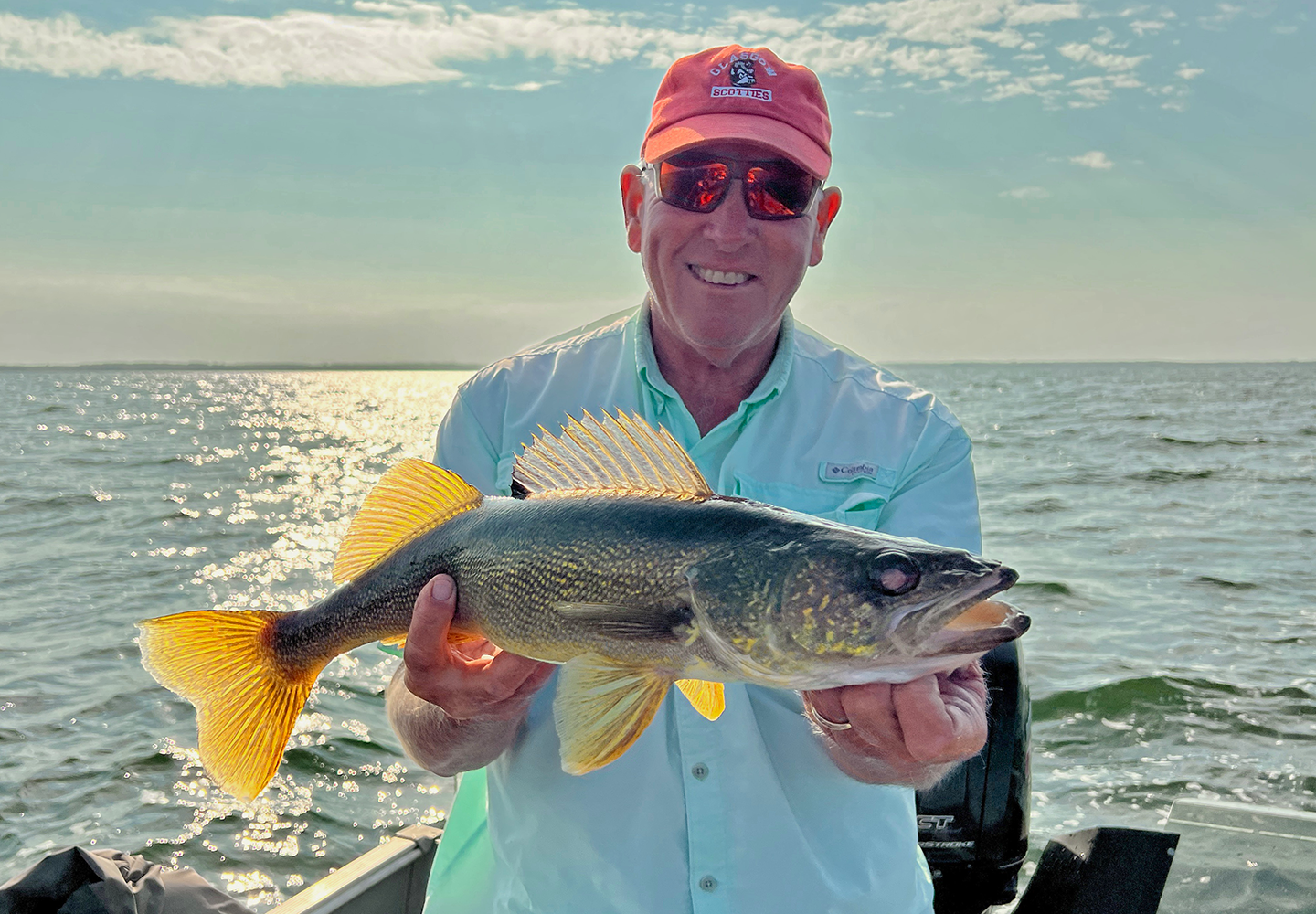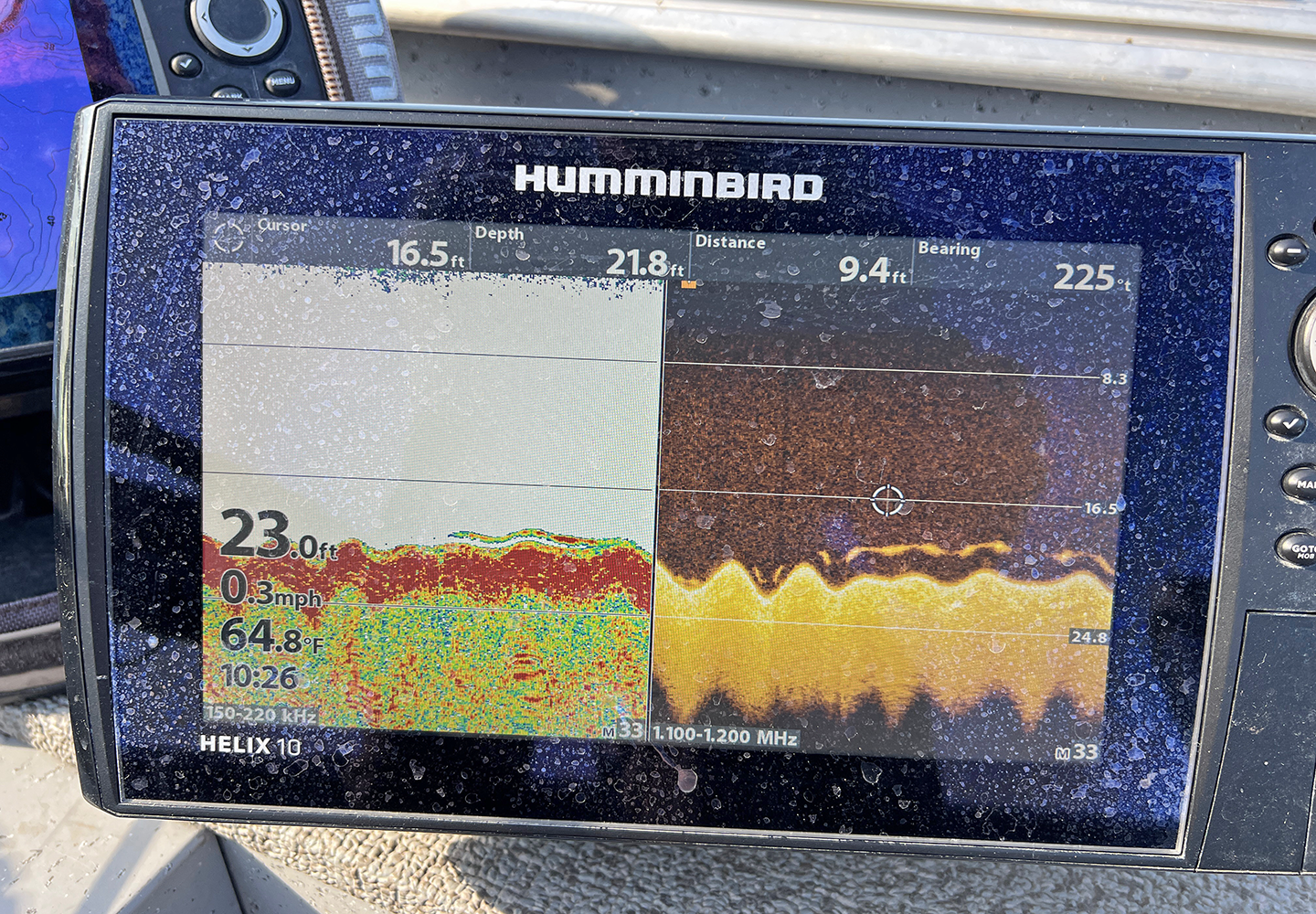Fall Walleye, Perch and Pike Report From Lake Winnie October 3, 2025
Mike Cooley and Larry Lashley with Walleye from Lake Winnie on October 2, 2025
It’s not easy talking about the end of our fishing season when the weather is warm, sunny and anything but fall-like. Still, the calendar tells us that it’s time to begin the wind down in preparation for winter. As we issue this final report of the fishing season, we want to be sure that you know how much we appreciate you for taking time to check in with us, thank you!
Over the past week, water temperatures have remained stable, locked into the middle of the 60-degree range. We see 65-to-66-degree readings at almost every stop on Big Winnie and in the Cutfoot Sioux chain, slightly warmer, reaching 68 to 69 degrees in calm, protected areas. Despite mostly sunny conditions, algae blooms are minimal, and in most regions, water clarity is on the rise. Secchi disk readings of 8 to 12 feet are common, but slightly dingier water can be found in shallow back bays and flowages.
Walleyes, perch and pike activity has generally increased, and at times fishing can be quite good. There are times though, like calm and sunny periods when fish activity can be slow. Even then, there is always someplace on the lake where fish are biting, and someone usually finds them. The trick to consistent walleye action is finding the right school of fish at the right time. Recapping recent trips with some of the guides this week confirms that. After checking several spots where fish were marked, but not active, they keep moving. Most of them eventually find one school of fish that is active and then, they enjoy good action, and happy customers.
Happiness, defined in different ways by different groups can be found in several ways.
Small walleye from Lake Winnie’s class of 2023
Small walleyes from the 2023-year class are fairly abundant and are now being harvested by folks in search of “eaters”. The 13-to-14-inch fish are found primarily in shallow water where low lying grasses cover the lake bottom. The vegetation provides cover of hordes of minnows and small game fish that are desirable to the smaller fish.
Key depths in these areas range from about 6 feet to 12 feet and vary with the weather conditions. Breezy, and cloudy conditions encourage a shallower bite, calmer weather conditions force fish deeper, if there is cover.
Jigs and minnows have taken over as the primary presentation in the shallow water. There are times though, and certain schools of fish which show a preference for faster presentations. Trolling with spinners, crankbaits or “rip-jigging” remains effective, especially when used as a search tool.
Larger walleyes, primarily from the strong 2018- and 2019-year classes have grown into the 20-to-22-inch size range with some slightly smaller, and others slightly larger. These fish appear to have different feeding preferences, and show up segregated on deeper, shoreline points that taper into the mid-lake basin. Key depths range from 16 to 22 feet, and fish will move up or down depending on weather conditions.
Image of single walleye on Lake Winnie October 2, 2025
Notable is that these fish are seldom found in schools and most commonly appear as singles or doubles. Covering vast stretches of water, and fishing with slow, deliberate presentations will trigger strikes. In recent days, “eating size” walleyes are few and far between, so don’t expect to harvest many fish in these areas. But if getting good photos, and releasing fish is your thing, this might be fun for you.
The 2 key presentations are jigging with minnows, and live bait rigging using larger, livelier minnows. We find that certain fish respond to one presentation, while others respond to the other. Moving slowly, at .4 to .6 MPH allows anglers to use both presentations simultaneously. So, 1 or 2 people may fish with jigs, while 1 or 2 people fish with live bait rigs.
Last week we mentioned that perch fishing action had increased. This week, the action has intensified even more, but now there are massive schools of small fish dominating the action. The presence of massive schools of 5- to 8-inch-long fish offer encouragement for future seasons, but not for the immediate capture of food. Larger perch, still available are mixed in with the small ones, but now they are difficult to single out. We’ve noticed that 10-to-11-inch perch are more likely found in areas away from larger schools of fish. If you’re catching lots of little ones, move away from the area and focus on singles and doubles.
Jig and minnow combinations are productive, but trolling spinners tipped with minnows is still putting perch in the boat too. Try using the spinners to locate perch and then switch to more deliberate jigging presentations.
Crappie fishing in both Cutfoot and Little Cutfoot has reverted to summer fishing patterns. There are more fish being caught in and around the shoreline vegetation, than there are in deeper, open water habitat. Slowly troll along the outer edges of shallow cabbage and coontail while casting jigs and plastics toward the shoreline. Fish activity can be okay during the daytime, but early morning hours are much more productive.
Northern pike are still showing up in a wide variety of locations. They can be found on the shallow flats, near cabbage patches, along steep breaklines and on rocks. There are enough pike caught while fishing for perch and walleyes that most folks are not targeting specifically. Those who are will be casting large lures or using large live minnows.
Unless we receive a major cold snap, the fall fishing action will probably continue to increase at a slow-but-steady rate. While this is likely our final full-scale fishing report of the season, we will offer an update whenever there is a significant shift in weather or fishing patterns.
Thanks again for checking in, we’ll see you next time!





